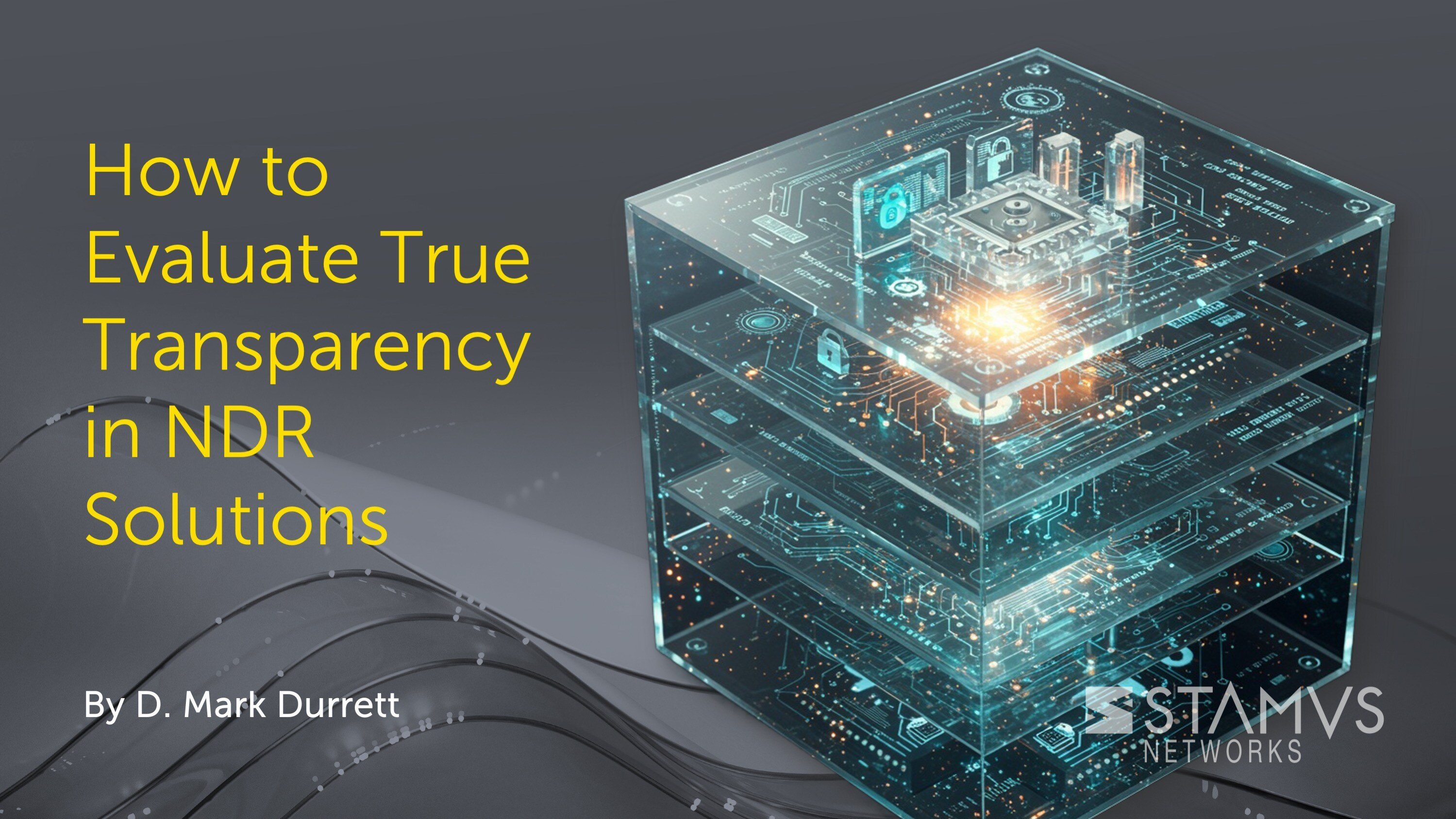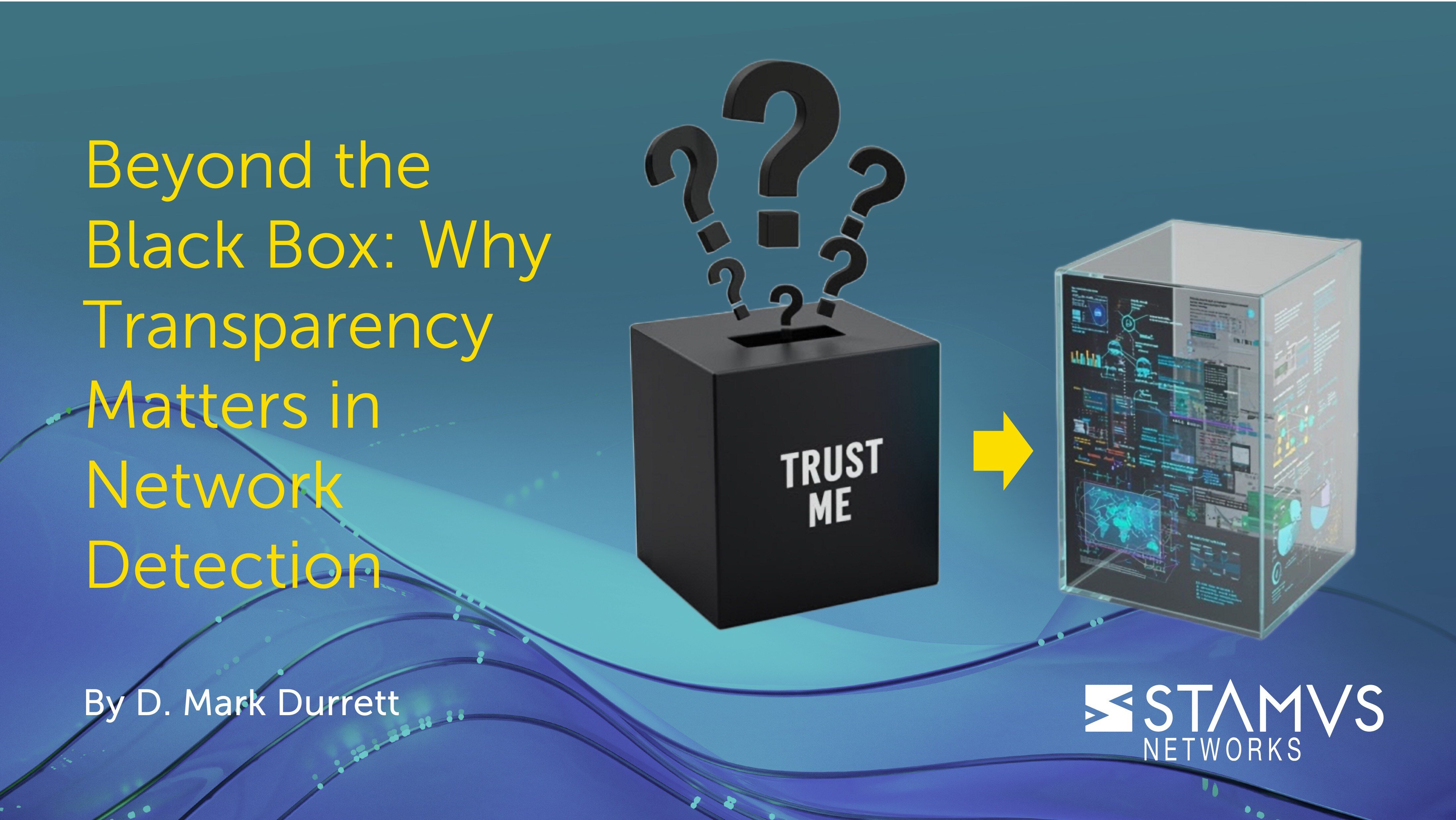Network detection and response (NDR) is still a newer product category in cyber security, and as a result, not everyone is fully aware of exactly what features they can expect from the network detection and response tools they evaluate. Understanding the features available to you can help your organization make a more informed decision when considering adding NDR to your security strategy. Let’s take a look at NDR, and review which features you can expect from most NDR options.
What is NDR in cyber security?
In cyber security, network detection and response (NDR) systems monitor and analyze network traffic for signs of malicious activity or security threats. This is done using a combination of advanced detection methods paired with automated incident response and threat-hunting tools. NDR security enhances an organization’s ability to proactively detect and respond to potential threats, reducing the risk of data breaches and unauthorized access.
Because network detection and response (NDR) functions by analyzing network traffic data, it continuously collects that data to provide near real-time detections. This is different than other popular threat detection and response systems, such as EDR, which perform data collection and analysis on individual devices.
NDR is a natural evolution from traditional network security tools like intrusion detection systems (IDS). Unlike IDS however, NDR provides advanced detection methods, anomaly detection, threat hunting, high-fidelity alerts, and automated response needed to combat emerging threats.
What are the features of NDR?
NDR includes several features that support its goal of detecting and responding to threats, however the way this is achieved often varies depending on the NDR vendors creating the solution. Generally, most NDRs will include many of the following features:
- Deep Packet Inspection: Certain NDRs engage in real-time capture and analysis of network traffic. This process involves extracting metadata, understanding communication patterns, detecting potential threats, identifying anomalies, and logging activity.
- Behavioral Analysis Engines: NDRs use machine learning and behavioral analysis to establish normal network behavior baselines. These engines are adept at detecting deviations that may indicate malicious activities.
- Threat Intelligence Integration: Competent NDRs seamlessly integrate with third-party threat intelligence feeds. This integration enhances detection capabilities by providing up-to-date information about known threats and indicators of compromise.
- Network Forensics: Network forensics tools assist in investigating security incidents by analyzing historical network data. This aids security teams in comprehending the scope and impact of potential breaches.
- Automated Incident Response: Most NDR solutions can initiate predefined automated responses to security incidents. This feature enables quick containment and mitigation of threats.
- Vulnerability Discovery: Some NDRs claim the ability to identify and assess vulnerabilities within the network that could be exploited by attackers. This contributes to proactive threat mitigation.
- Threat Hunting: A threat hunting platform — often integrated into the NDR — uses data collected by the NDR to sift through network traffic and identify user-selected threats, suspicious behaviors, or anomalous activities.
What is the purpose of NDR?
The purpose of NDR software is to help organizations monitor their network to mitigate the risk of cyber threats, unwanted user behaviors, and malicious activity. There are four primary use cases for NDR software:
- 1. Automated Threat Detection - Advanced algorithms and machine learning automatically identify potential threats within network traffic. Continuous monitoring and network data analysis enable NDR software to detect anomalous behaviors, malicious patterns, and IOCs in near real-time. This enables security teams to perform the following use-case – incident response.
- 2. Incident Response - By capturing detailed network activity logs and traffic data, NDR software empowers security teams to reconstruct the sequence of events, investigate the root cause, and understand the extent of the breach. This enhanced visibility allows for faster response times, enabling organizations to contain and mitigate the impact of security incidents efficiently.
- 3. Proactive Threat Hunting - Security analysts can use advanced search capabilities, behavioral analytics, and threat intelligence to actively explore network data, identify hidden threats, and uncover emerging attack patterns. Proactive threat hunting helps organizations stay ahead of threat actors, detecting and neutralizing threats before they cause harm.
- 4. Remediation - Once a threat is identified, NDR software can automatically trigger a response action through integrations with other systems like EDR to block suspicious IP addresses, isolate compromised end-user devices, or implement access control policies. These actions help contain the threat, prevent lateral movement, and minimize the impact of a security incident.
What is the difference between NDR and IDS?
The difference between NDR and IDS is that NDR tools include additional advanced features not found in IDS systems.
Intrusion detection systems (IDS) function by monitoring network traffic and comparing that traffic to a predetermined, limited ruleset. When traffic matches a signature, the IDS will issue an alert. Unfortunately, IDS is commonly known for issuing a high amount of false positives, leading to alert fatigue and missed critical attack signals. IDS is also not equipped to detect threats outside of its rule database, and will routinely miss weaker attack signals such as those found in unauthorized user activity, anomalous network activity, malware beacons, and homoglyphs.
NDR tools, on the other hand, can filter alert events from its various detection mechanisms into actionable alerts with context. For example, the Stamus Security Platform (SSP), escalates these types of events into Declarations of Compromise™, which are high-fidelity alert events signaling serious and imminent threats. Most NDR systems are also capable of detecting the weak attack signals that are missed by IDS due to advanced detection methods built with machine learning and artificial intelligence.
Some NDR systems rely on IDS signature-based threat detection, but it is important to note that this detection method is just one of many. An important distinction is that some NDRs choose to use elements of IDS-based detection, however no IDS is capable of matching the functionality of NDR.
What are the most important features an NDR should have?
We believe that there are six key requirements a modern and mature NDR must fulfill in order to bring value to an organization’s cybersecurity strategy. An NDR must provide:
- Sophisticated detection
- Transparent, explainable results with evidence
- High-fidelity response triggers
- Guided threat hunting
- Openness and extensibility
- Complete data sovereignty
If your organization is evaluating NDR solutions, you should look to these requirements as a basic guideline for what to expect from an effective NDR. The Stamus Security Platform satisfies all six of these requirements and packages them into a single, high-effective network-based threat detection and response system. To learn more about NDR, what you should consider when evaluating prospective NDR solutions, and how NDR can complement your existing cybersecurity tools, we recommend these resources:
- EDR, NDR, and XDR: Exploring Three Approaches to Threat Detection and Response
- A Practical Guide for Migrating from Legacy Intrusion Detection System (IDS/IPS) to a Modern Alternative
- Real World Success Stories: In the Trenches with NDR
To be notified of new blog posts and other news, make sure to subscribe to the Stamus Networks blog and the Stamus Spotlight Monthly Newsletter, follow us on Twitter, LinkedIn, and Facebook, or join our Discord.





